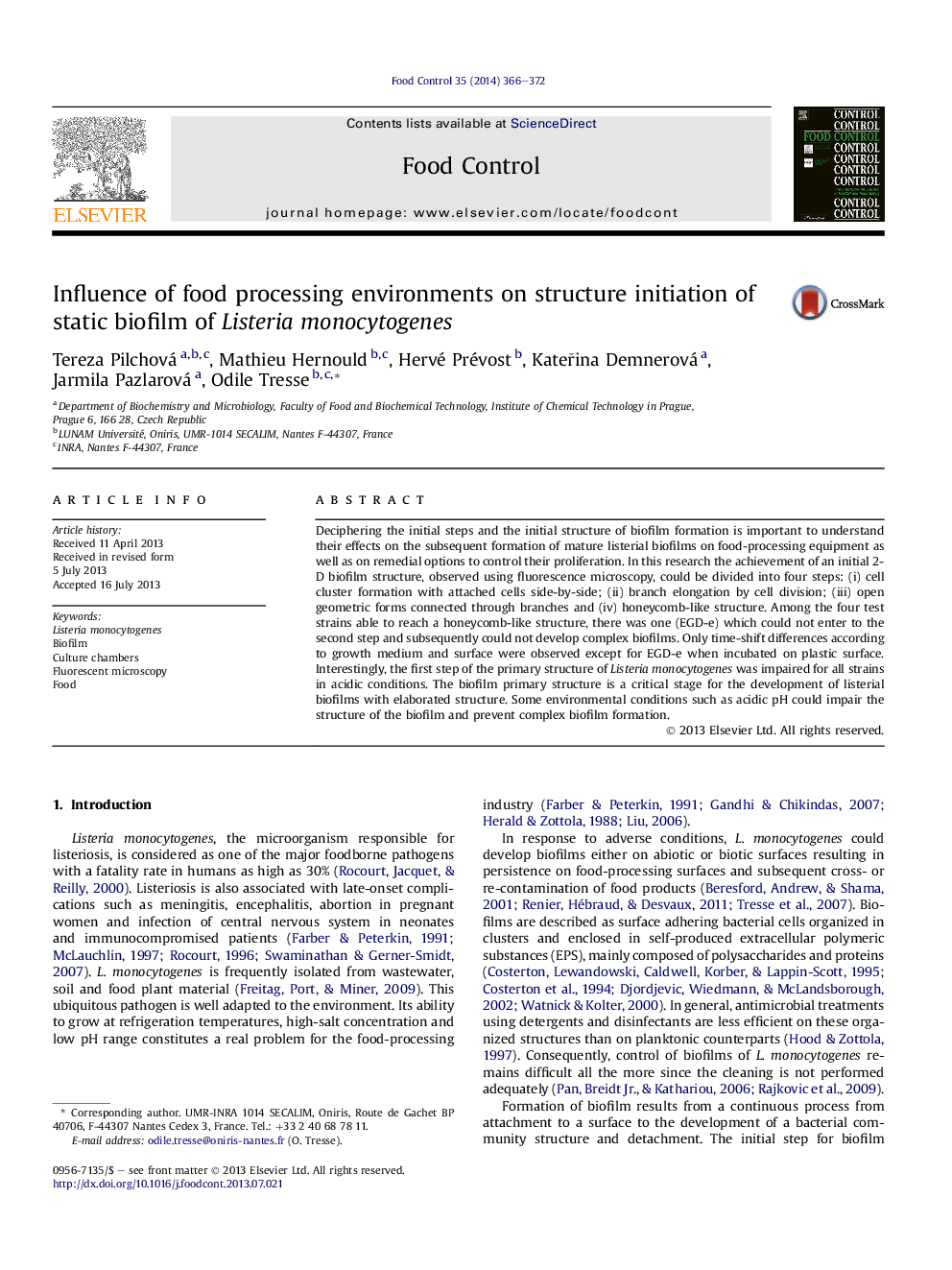| کد مقاله | کد نشریه | سال انتشار | مقاله انگلیسی | نسخه تمام متن |
|---|---|---|---|---|
| 6392663 | 1330441 | 2014 | 7 صفحه PDF | دانلود رایگان |
- Understanding the biofilm development to offer the prevention options for contaminations caused by Listeria monocytogenes.
- Fluorescence microscopy was used to decipher the initial structure of biofilm.
- The achievement of a starting 2-D biofilm structure could be divided into four distinguish steps.
- Some environmental conditions could impair the complex structure of the biofilm.
Deciphering the initial steps and the initial structure of biofilm formation is important to understand their effects on the subsequent formation of mature listerial biofilms on food-processing equipment as well as on remedial options to control their proliferation. In this research the achievement of an initial 2-D biofilm structure, observed using fluorescence microscopy, could be divided into four steps: (i) cell cluster formation with attached cells side-by-side; (ii) branch elongation by cell division; (iii) open geometric forms connected through branches and (iv) honeycomb-like structure. Among the four test strains able to reach a honeycomb-like structure, there was one (EGD-e) which could not enter to the second step and subsequently could not develop complex biofilms. Only time-shift differences according to growth medium and surface were observed except for EGD-e when incubated on plastic surface. Interestingly, the first step of the primary structure of Listeria monocytogenes was impaired for all strains in acidic conditions. The biofilm primary structure is a critical stage for the development of listerial biofilms with elaborated structure. Some environmental conditions such as acidic pH could impair the structure of the biofilm and prevent complex biofilm formation.
Journal: Food Control - Volume 35, Issue 1, January 2014, Pages 366-372
